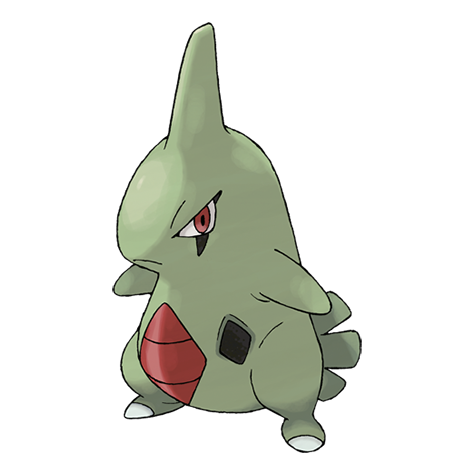
The Larvitar Store
The Larvitar Store is a centralized data configuration store that manages the state and settings required for the application. It keeps track of information related to tools, series, viewports, and other imaging-related data, enabling dynamic interaction with the viewer.
Core Responsibilities
The Larvitar Store serves several key purposes:
Tools Management:
- Stores the currently active tools for the left and right mouse buttons.
- Allows dynamic switching and resetting of tools.
Series Management: Tracks series data, including:
- imageIds: Array of image identifiers for each series.
- cached: Indicates whether each image in the series has been cached.
- progress: Tracks the loading progress of the series.
- elementId: HTML element ID where the series is rendered.
Viewport Management: Keeps viewport-specific data, such as:
- Slice and time positions (sliceId, timeId).
- Pixel spacing, dimensions, and modality.
- Viewer settings like zoom, rotation, and translation.
Error and Logging: Captures errors and logs them for debugging purposes.
Store Structure
The store is defined by the Store type and includes the following key properties:
| Property | Type | Description |
|---|---|---|
colormapId | string | Current colormap identifier (e.g., "gray"). |
errorLog | string | Error log for debugging. |
leftActiveTool | string (optional) | Active tool for the left mouse button. |
rightActiveTool | string (optional) | Active tool for the right mouse button. |
series | { [uniqueUID: string]: StoreSeries } | Object mapping uniqueUID to series-specific data. |
viewports | { [key: string]: StoreViewport } | Object mapping viewport IDs to viewport-specific data. |
The StoreSeries type includes the following key properties:
| Property | Type | Description |
|---|---|---|
imageIds | string | Array of imageIds for the series. |
cached | { [imageId: string]: boolean } | Tracks whether each imageId in the series has been cached or not. |
The StoreViewport type includes the following key properties:
| Property | Type | Description |
|---|---|---|
loading | number | Caching progress of the series from 0% to 100 %, initialized to null. |
ready | boolean | True when the viewport is ready and imageId has been rendered. |
uniqueUID | string? | Unique identifier for the series. |
modality | string | Modality of the image (e.g., "CT"). |
isColor | boolean | True if the image is in color. |
isMultiframe | boolean | True if the image is multiframe. |
isTimeserie | boolean | True if the image is a timeserie. |
isDSAEnabled | boolean | True if DSA is enabled. |
isPDF | boolean | True if the image is a PDF. |
imageId | string | Identifier for the image. |
rows | number | Rows in the image. |
cols | number | Columns in the image. |
spacing_x | number | Spacing in the x direction. |
spacing_y | number | Spacing in the y direction. |
thickness | number | Slice thickness. |
numberOfSlices | number? | Number of slices in the image. |
numberOfFrames | number? | Number of frames in the image. |
minPixelValue | number | Minimum pixel value. |
maxPixelValue | number | Maximum pixel value. |
sliceId | number | Slice index identifier of the rendered image. |
minSliceId | number | Minimum slice index. |
maxSliceId | number | Maximum slice index. |
pendingSliceId | number? | Pending slice index to be rendered. |
timeId | number | Time index identifier, for timeseries. |
timeIndex | number? | Time index, for timeseries. |
minTimeId | number | Minimum time index, for timeseries. |
maxTimeId | number | Maximum time index, for timeseries. |
timeIds | number[] | Array of time index identifiers, for timeseries. |
timestamp | number | Timestamp of the image, for timeseries. |
timestamps | number[] | Array of image timestamps, for timeseries. |
numberOfTemporalPositions | number? | Number of temporal positions, for timeseries. |
dsa | boolean | True if DSA is enabled. |
pixelShift | number[] | Pixel shift for the image in DSA mode. |
waveform | boolean | True if the image has waveform data, for ecg |
viewport | viewportType | Type of the viewport. |
The Viewport type includes the following key properties:
| Property | Type | Description |
|---|---|---|
scale | number | Current scale factor for the viewport. |
rotation | number | Current rotation for the viewport. |
translation | {x:number, y:number} | Current translation for the viewport. |
voi | {windowCenter:number, windowWidth:number} | Current windowing settings for the viewport. |
default | viewportType | Default viewport settings. |
Initialization
The store must be initialized before use:
import { store } from 'larvitar';
store.initialize();
Viewport Management
A Viewport is a window that displays an image. The store manages viewport-specific data, such as the slice and time positions, pixel spacing, dimensions, and modality. It also stores viewer settings like zoom, rotation, and translation.
To add a viewport to the store, use the addViewport function with the HTML element ID where the viewport is rendered:
import { store } from 'larvitar';
store.addViewport(elementId);
To get the viewport data for a specific element ID, use the get function with the viewport key:
import { store } from 'larvitar';
const viewport = store.get(["viewports", elementId]);
To delete a viewport from the store, use the deleteViewport function with the viewport key:
import { store } from 'larvitar';
store.deleteViewport(elementId);
Series Management
The store tracks series data, including image identifiers, caching status, and loading progress.
To add a set of imageIds to the store, use the addImageIds function with the uniqueUID and imageIds:
import { store } from 'larvitar';
store.addImageIds(uniqueUID, imageIds);
To remove set of imageIds from the store, use the removeImageIds function with the uniqueUID:
import { store } from 'larvitar';
store.removeImageIds(uniqueUID);
To remove all imageIds from the store, use the resetImageIds function:
import { store } from 'larvitar';
store.resetImageIds();
Useful functions
The store provides several utility functions for managing data:
| Function | Parameters | Description |
|---|---|---|
setSliceId | elementId, imageIndex | Sets the slice ID for the viewport identified by elementId. |
setPendingSliceId | elementId, timeIndex | Sets the pending slice ID for the viewport identified by elementId. |
setMaxSliceId | elementId, imageIndex | Sets the max Slice ID for the viewport identified by elementId. |
setTimeId | elementId, timeIndex | Sets the time ID for the viewport identified by elementId. |
setDSAEnabled | elementId, enabled | Sets the DSA mode for the viewport identified by elementId. |
setDSAPixelShift | elementId, pixelShift | Sets the DSA pixel shift for the viewport identified by elementId. |
ResetActiveTools | elementId | Resets the active tools. |
